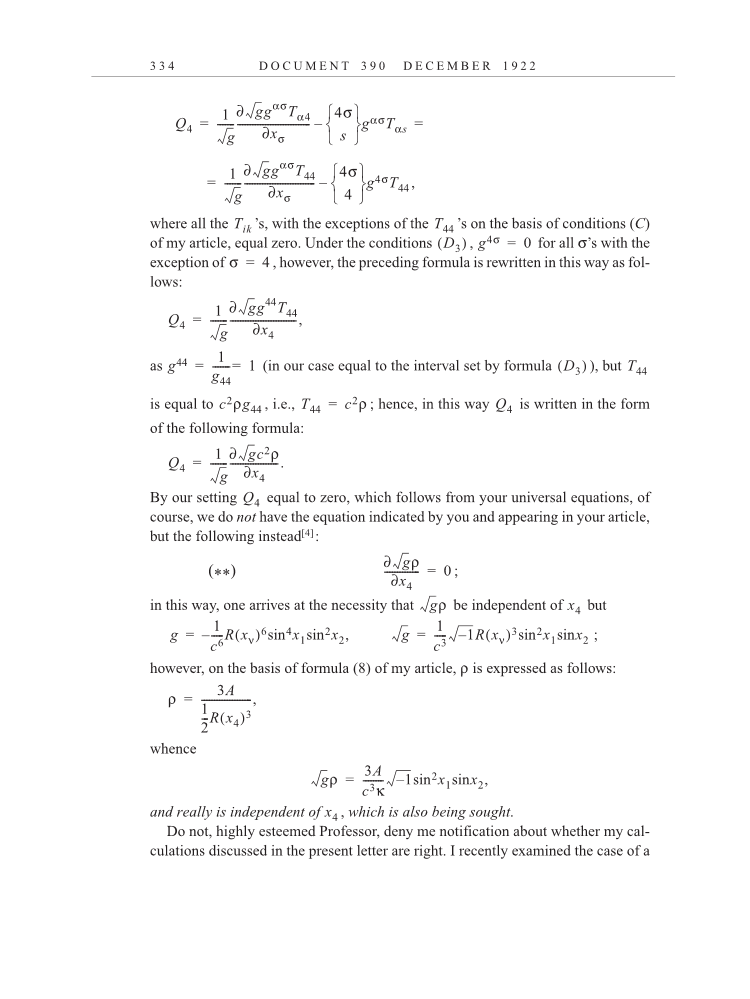3 3 4 D O C U M E N T 3 9 0 D E C E M B E R 1 9 2 2 where all the ’s, with the exceptions of the ’s on the basis of conditions (C) of my article, equal zero. Under the conditions , for all σ’s with the exception of , however, the preceding formula is rewritten in this way as fol- lows: as (in our case equal to the interval set by formula ), but is equal to , i.e., hence, in this way is written in the form of the following formula: By our setting equal to zero, which follows from your universal equations, of course, we do not have the equation indicated by you and appearing in your article, but the following instead[4] : (**) in this way, one arrives at the necessity that be independent of but however, on the basis of formula (8) of my article, ρ is expressed as follows: whence and really is independent of , which is also being sought. Do not, highly esteemed Professor, deny me notification about whether my cal- culations discussed in the present letter are right. I recently examined the case of a Q4 1 g ------ ----------------------------- ∂ ggασTα4 ∂xσ - 4σ s gασTαs – = = 1 g ------ ---------------------------- ∂ ggασT44 ∂xσ - 4σ 4 g4σT44 , – = Tik T44 D3) ( g4σ 0= σ 4= Q4 1 g ------ ---------------------------,44 ∂ gg44T ∂x4 = g44 1 g44 ------- 1== D3) ( T44 c2ρg44 T44 c2ρ = Q4 Q4 1 g ------ --------------------. ∂ gc2ρ ∂x4 = Q4 ∂ gρ ∂x4 ------------- - 0 = gρ x4 g 1 c6 ----R( - xν)6sin4x1sin2x2, –= g 1 c3 ---- - 1– R xν)3sin2x1sinx2 ( = ρ 3A 1 2 --R(x4)3 - -------------------- ,= gρ 3A c3κ -------- 1sin2x1sinx2, – = x4
